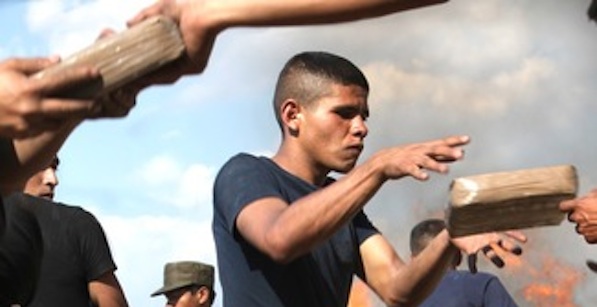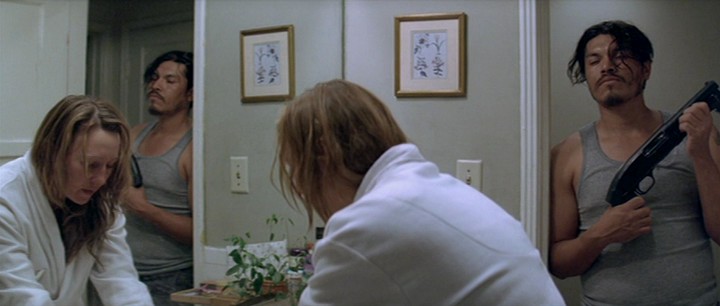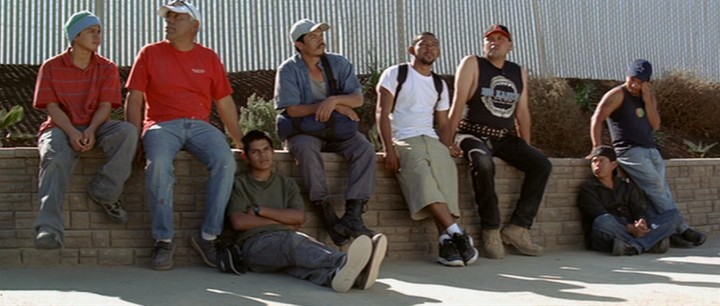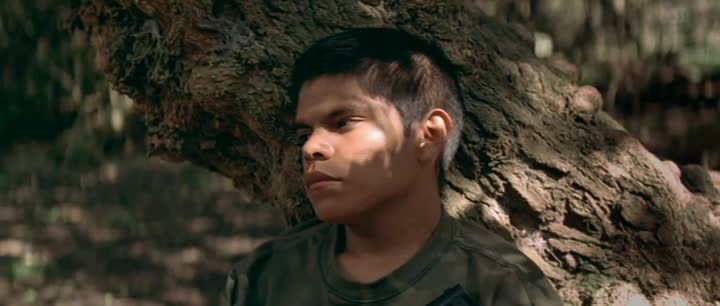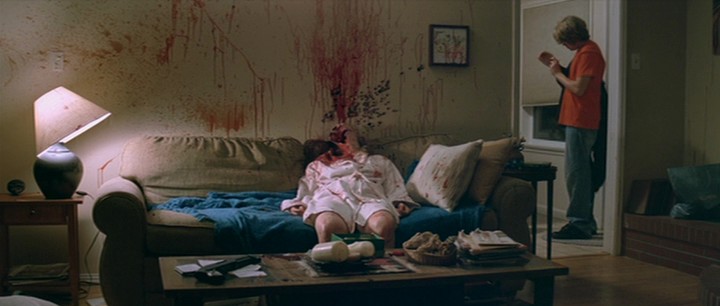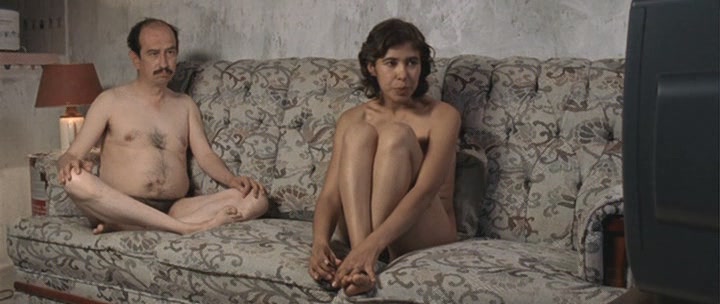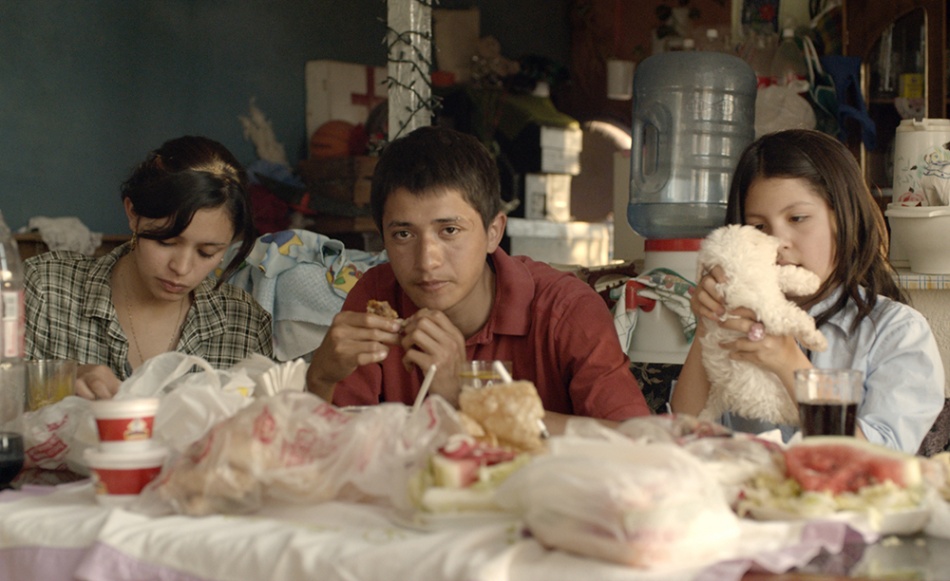His feature debut Sangre got a FIPRESCI prize in Cannes nine years ago. Three years later, his second film, internationally acclaimed Los bastardos, was screened in Un Certain Regard. Now, with Heli in the main competition alongside the latest works from Polanski, Winding Refn, Farhadi, Coen brothers and Jarmush, Amat Escalante‘s status in Cannes has significantly risen.
We met before the film was selected to compete for the Palme d’Or, but Escalante at a certain point expressed the hope that the film would be positively viewed by the festival’s board. And so it was. With our conversation focusing on Los bastardos—his yet most-talked-about film—we managed to touch on such various subjects as styles of filmmaking, death, sex, Carlos Reygadas, painting and the image of illegal immigrants in the U.S. Escalante, who calls his scripts “supermarket list(s) with dialogue,” explains why he prefers to work with non-actors, and what would he make if he had a Batman-sized budget at his disposal. He also sheds some light on his relationship with Carlos Reygadas…and the maestro’s dogs.
Keyframe: Critics very often notice that your films meander between documentary and [fiction] feature. Ulrich Seidl, who’s art is also referred to this way, claims that he doesn’t think such things as ‘documentary’ exist at all, because once you place a camera somewhere, it’s already coined reality.
Amat Escalante: Early in my career I was very much impressed by fiction films; they were the reason why I wanted to become a director. But among many interesting movies I was watching back then, there were also some documentaries that I found more powerful than fiction films, like the Maysles brothers’ or Frederick Wiseman’s productions for example. I started to think documentary might be what I should do, so I took a course in documentary filmmaking in Cuba. It was actually the only time I studied film, or any type of thing. Then I tried to shoot a documentary in Mexico, using the tools they taught me there. I didn’t like the result at all. Partly it was because of my personality—I wasn’t able to get involved with the characters enough, I was thinking too much about what is it that I wanted to achieve. Maybe it was also a matter of practice—this was only my first attempt. I was disappointed. I decided I should write a script myself and get these people to do it. And this is what I did. I don’t feel like I’m good at making pure documentaries. I have to make them up.
Keyframe: I remember you saying that when making Los bastardos you were influenced by film noir and westerns. If you stayed in the documentary field, including such influences in your art would be much more difficult….
Escalante: Do you know Errol Morris? I like him very much. He’s not what you consider a typical documentary filmmaker; he does his own thing—it’s interesting, fresh. He plays with the visuals, the music. His film The Thin Blue Line, it’s like a film noir, in a way, more than a documentary.
Keyframe: Mexicans in the U.S.: it’s a subject highly stereotyped by cinema. Yet, in Los bastardos, your perspective on it is very far from mainstream. How much has your own experience influenced these characters?
Escalante: My father crossed the border illegally, before I was born, to meet my mother, who was in the U.S. Many Mexicans know someone who has crossed the desert; this is kind of a common story there. This is why they want to make movies about this. What I was interested in was making a movie about the experience of being in the United States, the place where these two cultures are present, yet they don’t ever touch each other; they’re completely separate. I wanted to show the tension between them and what happens when they clash.
Keyframe: When your protagonists are waiting for a job, lining up near the highway along with other workers, this sad gathering looks like a weird combination of a freakshow and brothel… also the way they are being treated by their employers is completely outrageous. It’s one of many very powerful moments in the film.
Escalante: I wanted to show how for many people they are ‘only Mexicans’ whose only reason to come to States is money. But it’s more complicated. It’s also tradition. Remember, it used to be Mexico there…and then in late 1800s it was all taken away. Of course things do not always look like in my film, there are also good people out there. Same goes for the scene in the park, where they get harassed. Sometimes you need to make a strong point for the movie to work out. I don’t like to clearly state that somebody’s good and somebody’s bad….In movies you don’t have to exaggerate, but sometimes you choose to show the extremes, to have a clearer reason for what happens later. Sometimes I feel like I can be too obvious and that’s something I’m not too happy about.
Keyframe: Crossing the border might not be a part of the plot, but this theme is still woven into the film with the personal stories your characters tell.
Escalante: This is the documentary part of me speaking. I cast this young boy [Rubén Sosa], who has crossed the desert many times. Eight, I believe….He was caught, taken back, and then tried again. He doesn’t talk about it in the movie, but I though that just by having him [there], burdened with this experience, the way he speaks, behaves, it’s in him and it will translate into the film. Same thing with the other characters. That is something I have never seen in other films that dealt with immigrants. Just actors from Mexico City, trying to imagine themselves in such a situation. It seemed so vague. Here I wanted to show this contrast: very real guys in a very fictional situation. That’s why even though the film is not a documentary it has a documentary feel to it.
Keyframe: I’ve heard your brother Martin, who was responsible for the casting, found the boy just two days before you started shooting?
Escalante: Yes. The other boy who was supposed to be in it didn’t want to do it anymore. So we all went to the streets. It was our art director, Daniela Schneider, who found him. He was standing somewhere in the corner of a street, waiting for work. He was homeless. She took a picture of him, and then I met him. He told us a lot of stories, out of which some were probably lies. But he lied so well it made us think he might be a good actor. That’s how he got the part.
Keyframe: What was the response to the film in Mexico?
Escalante: When it was released in Mexico people would ask somebody on the line, ‘what movie is that?’ and the answer would be ‘a documentary about immigrants.’ And they haven’t seen the movie yet. It was not that good, because people do not necessarily wanna watch documentaries. Also, when somebody walks in not knowing it is fiction, and sees what happens in the film, they might get offended by it. It happened. Supposedly the film shows Mexicans in a bad light.
Keyframe: It’s interesting. I see where these people are coming from, but I didn’t feel this way. You show ordinary people with this seed of evil somewhere inside them. But it’s not they who enable it to grow, but exterior factors: the situation, the environment they live in….I didn’t feel like they did something bad; more like it ‘happened’ to them.
Escalante: When it came out, of course many people liked it; but the critics were stating that Mexicans do not need this type of film, because they already have such bad reputation in the U.S. If I were to make a movie the size of Batman then maybe I’d be more careful with some things. But here, at this level, I feel one has a freedom to not worry about clichés and try to show something that you think makes sense. I’m not saying Mexicans, or my characters, are plain bad. But maybe if the people who have no money do bad things, there’s more to it than just them being bad?… Also, people often ask me about the way violence is portrayed in the movie.
Keyframe: I’d also like to ask about it. Despite it’s uber-brutal content the final act of killing in Los bastardos looks more like a human being turning into an abstract painting than a slaughterhouse… it’s also a part of a longer, very surprising, fast-paced sequence. How did you come up with the idea for it?
Escalante: This scene was the seed for the whole movie, the initial idea. I had this image in my head and from there I worked to the sides, to the beginning and to the end. At some point the movie was supposed to be very minimalistic: just them working, going to the house, doing IT and move to the countryside, to the field, both of them, keep working like nothing has ever happened. You’d just see work, that, and then more work. But it took me very long to get the money, I kept on writing and more story came to me. The actual scene took us one day to shoot, it was very complicated, required a lot of planning. That scene cost me as much as my other film, Sangre, in total.
Keyframe: It’s not only violence that’s portrayed in a very distinct way in your films, but also sexuality. In Sangre the female protagonist welcomes her partner with her legs spread, asking for forgiveness. In Los bastardos the (so called) sex scenes are so devoid of any emotion, it felt like they could be eating popcorn and it would not make the tiniest difference in the emotional tension. Additionally, you choose to fragment the scenes through camerawork, never showing the whole picture. Why?
Escalante: I guess what is the biggest mystery in life for me is death, sex…and love, but that’s gonna be in the next movie, Heli. Well, I guess Sangre is about a very special aspect of love—jealousy. And the sex? I think in both movies, when it happens, it has kind of symbolic meaning to it. In Los bastardos my protagonists are eating the ‘American dream.’ They’re consuming it, feeding off it. But the character embodying the dream does not seem too enthusiastic. They could have raped her, but she says no, and they just stop. Those scenes, they are also defined visually. My father was a painter, he painted a lot of nudes, women mostly. These images stuck with me, the way he portrayed them. He never showed their faces, just the bottom area….Maybe that’s also how I film it. Like in Sangre—apart from the first sex scene—all the others are like that. But my fondness for documentary style is also visible here. I don’t plan scenes meticulously. I write a lot of stuff and then forget about it just to see what happens on set, with these people, who are non-actors usually, except for the woman [Nina Zavarin] in Los bastardos. It’s always a little experiment when we put them all together, tell them what to do and see, what happens. In Sangre the script was rather plain and mechanical. We’d shoot five takes each. They all had different mistakes. I’d just choose the one with the mistakes I liked best.
Keyframe: So your scripts are more like a set of clues than complete guidelines?
Escalante: There’s dialogue and descriptive action. If you read a regular Hollywood script they really need the actors to read and feel what the audience will supposedly feel. That would be impossible for me. Mine is more like a supermarket list with dialogue. We go on, shoot the film, piece the elements and see what happens. This is how Sangre and Los bastardos were shot. With Heli it was less like it. The script was longer, more of a normal script, 130 pages, with the others being forty five and sixty pages long. Heli is very different from everything I’ve made so far. I shot sixty hours of footage—Sangre was ten, Los bastardos was twenty hours… sixty is really almost too much for me to edit.
Keyframe: You very often collaborate with your brother. How did you work together on Heli?
Escalante: I didn’t write it with him, but he did the casting, which is very important.
Keyframe: As we already know! Can you tell me more about Heli? It is participating in the main competition in Cannes this year!
Escalante: I shot this film in Mexico. It’s protagonist’s name is Heli, which is also the name of the movie, and it’s about him and the small family he has: father, sister and young wife. The sister gets into trouble, because she falls in love with some guy she’s not supposed to… And then the whole family becomes involved in some criminal stuff. I edited it in Carlos Reygadas’s new studio, which is situated in his house. It’s the same building you see in Post Tenebras Lux, a very nice area, with all the people, and the dogs running around… They’re my friends now! Carlos is also a producer of the movie. He doesn’t have any money to subsidize projects, but he’s produced Sangre, Los bastardos and this one along with Mantarraya [established in Mexico City in 1998, Mantarraya Producciones works as a platform for a new generation of filmmakers and has earned a reputation for promoting new talents].
Keyframe: Reygadas has been an important influence to your career, yet your poetics are very different. He’s more into the emotions, fantasy, and you’re very ‘here,’ very present.
Escalante: Me and Carlos met because we both liked the same movies. At the time we kind of connected through Werner Herzog and Tarkovsky. Herzog is more similar to me in the way you described it. The way I make my movies, the way they are, is because this is how I can manage to make them. But as I move ahead with my career, and make more films, I do want to try different things.

